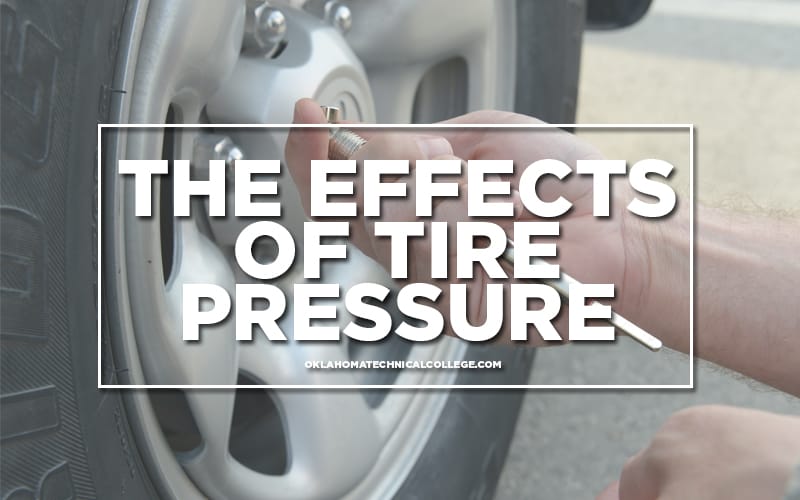Pressure. When we hear that word we associate it with stress. We feel it at work, at home and in public. It is everywhere and is a part of our lives. We often forget about the pressure that we use every day – our tire pressure – often taking it for granted, until we have a problem.
We all know we have to keep our tires aired up but often we don’t understand why. The rule of thumb is for every 10 degrees of temperature change, we see a linear change of one pounds per square inch (PSI) in our tires – and we all know how Oklahoma weather likes to throw us curve balls.
The adverse effects of low tire pressure can not only hurt your wallet, but can possibly cause bodily harm.
When a tire is running low on air, we lose fuel mileage due to an increase in friction. That effect is multiplied on later model vehicles with big wheels and low-profile tires. Running even a little low on air can cause the side of the tire to contact the road. When this happens, it tears up the inside of the tire because the side is not made for it. Then we have to replace the tire because it becomes unsafe. That hurts our wallet.
That extra friction causes our tires to heat up, and in extreme cases they can come apart. The last thing we want to deal with is a tire that has come apart on our way to work. Many times this can be prevented by maintenance. Best case scenario, we are late and have to change the tire on the side of the road. Worst case, we cause an accident and someone gets seriously hurt.
Tire pressure that is low on a vehicle can simulate a problem with the way the vehicle steers and handles. We lose our responsive handling and increase the possibility of a rollover. If your tire pressure is low on one tire, it can cause the vehicle to pull. You may think you need an alignment but in actuality, it could just be a low tire. This also causes premature tire wear and decreases the life of your tires.
Over inflation can also lead to serious problems. When you over inflate your tires, you are rounding the tire where it contacts the road. That leads to less contact area between the tire and the road which causes a loss of traction. Over-inflated tires also wear in the center more than the outside causing us to have to replace the tire sooner.
So remember: set your tire pressure at least once a week. Preventative maintenance saves you time and money and makes your ride a little more comfortable.
By: Daniel Caddell
More on Automotive Technology:








